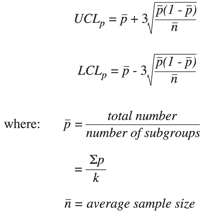Saving Face While Losing Employees
Iffy Products and its quality manager, Bjorn Luzer, are in trouble. Luzer hired eight inspectors to ensure the quality of the company’s products, but two promptly quit. E. Stiseest and Wes Tiswest left in the middle of their shifts, angry over Luzer’s demands that they show up on time for work. In addition, Luzer was forced to fire two others, Hal Zangels and Dee Mented, after twice finding them sound asleep behind the production line.
“I just don’t know why we can’t attract qualified employees,” Luzer grouses, forgetting for a moment that he has absolutely no qualifications for his own job.
The four remaining quality inspectors are working overtime to ensure that every product is adequately inspected. In the midst of this frenetic activity, Luzer is informed that a customer insists on SPC data for the shafts the company manufactures, complaining that the part number on the shaft is unreadable.
Instead of training his inspectors to apply SPC to the parts rather than relying only on visual inspection, Luzer takes the opportunity to demonstrate his statistical prowess and solve the problem himself.
Because this situation demands attributes charting, he tells his boss, Rock de Bote, that he can produce a p chart. Luzer remembers that samples should be taken each hour, day or shift (or whatever period seems appropriate), and that the sample size should remain constant. He can hardly wait to wow his inspectors (and his boss) with the formula for calculating control limits:

Luzer explains all this to de Bote and his remaining inspectors, who listen with less-than-rapt attention. One of the inspectors, Carla Main, asks, “How do we tell good data from bad?”
Since Luzer doesn’t answer right away, de Bote says, “Why don’t you explain operational definitions, Bjorn?”
Because Luzer has skipped the chapter in his statistics book relating to operational definitions, he’s at a loss to respond. “Oh, they can look that up in the work rules section of the company handbook,” he says.
What was the appropriate response from Luzer in this situation? An operational definition is:
A. A clear, concise definition of a measure when applied to data definition
B. A description of the operation that calculates sample size
C. The operation of determining which statistical process to use in a given situation
D. A function of work rules concerning an organization’s operation
Answer A is correct.
Unfortunately, there are many Bjorn Luzers who don’t take the time to properly define what they’re measuring. This results in attribute and Pareto charts that aren’t worth the paper they’re printed on.
An operational definition is a clear, concise definition of a measure. It’s fundamental to collecting data and especially important for decisions about whether something is correct or incorrect, or depends on visual checks that leave room for confusion. When collecting data, it’s essential that everyone has the same understanding and collects data in the same way. Therefore, operational definitions should be articulated beforehand.
Beyond data collection, operational definitions can apply in a more general sense to define meaning. For example, what constitutes on-time delivery of goods? It might be a particular month, week, day or time of day; this must be specified in order to evaluate whether the process is indeed completed on time.
Michael J. Cleary, Ph.D., founder and president of PQ Systems Inc. is a noted authority in the field of quality management and a professor emeritus of management science at Wright State University in Dayton, Ohio. A 29-year professorship in management science has enabled Cleary to conduct extensive research and garner valuable experience in expanding quality management methods. He has published articles on quality management and statistical process control in a variety of academic and professional journals.
Editor’s note: This is Cleary’s final column with Quality Digest. We’d like to thank him for nearly four years of interesting, entertaining and educational contributions.
|